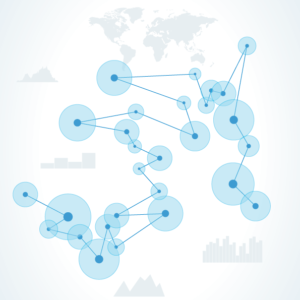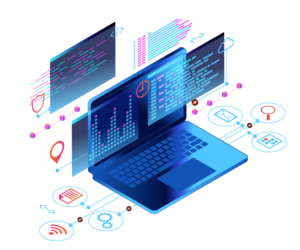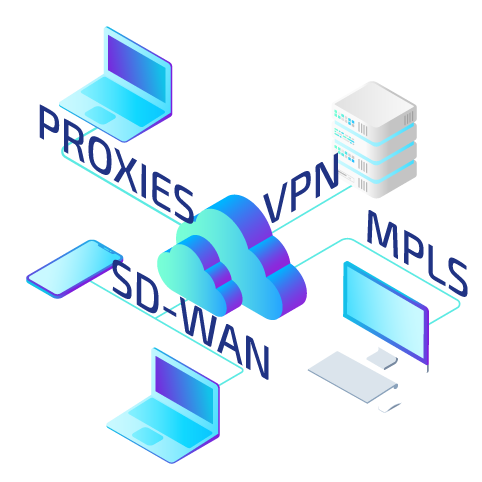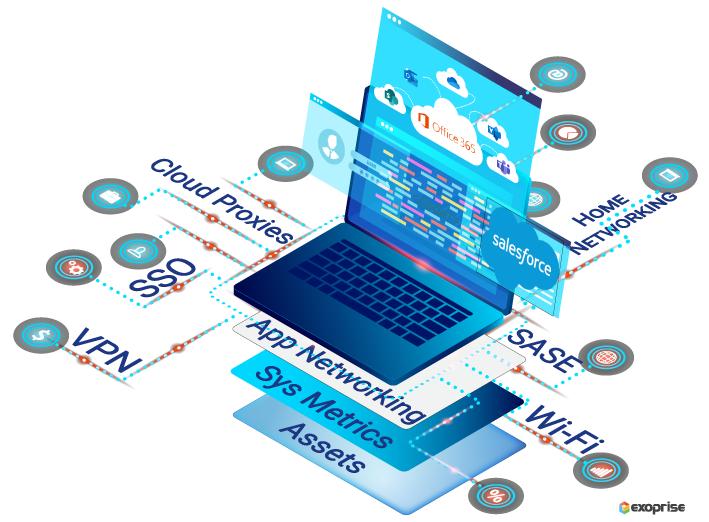6 Use Cases for Digital Experience Monitoring
If you live and breathe in the technology industry, chances are you are hearing Digital Experience Monitoring a lot these days. So what is Digital Experience Monitoring (DEM), and why is IT obsessed with it? With a remote-first culture brewing in every company, IT needs to ensure that employees on their machines are productive and satisfied with the performance of typical enterprise applications such as Microsoft 365, Salesforce, Workday, etc. A DEM solution collects application and desktop user experience (UX) insights holistically, giving IT a broader context for troubleshooting performance issues. Let’s discuss six use cases for DEM.
In this Post:
- Complete Experience Visibility
- Proactive Diagnostics
- Optimize Device Refresh
- Cloud App Migrations
- Network Upgrades
- Work Anywhere Troubleshooting
- FREE 15-Day Trial
Complete Experience Visibility
Enterprise network and experience visibility sit at the cornerstone of a complete monitoring solution. After deriving critical insights for their environment, IT makes proactive decisions to resolve performance and latency issues that impact end-user experience. In real-time, access to detailed network metrics (TTFB, response time, connect time, login time, lookup time, bandwidth, etc.) offer clues into the uptime and availability of commonly used business applications such as Microsoft 365. In addition, with real user metrics (Wi-Fi strength, CPU and memory usage, navigation time, experience score, etc.), IT paints a holistic picture to uncover all the blind spots. Traditional monitoring tools are limited in their scope of bringing all the underlying network components and metrics in a single pane of glass especially when it comes to applications that IT teams don’t own or control like Software-as-a-Service applications (SaaS).

Service Delivery Chain for Business Applications
Monitoring networks for complete end-to-end visibility with a DEM solution generates higher rewards for IT. By breaking down the entire service delivery chain into individual components, network architects and operators can isolate bottlenecks and drastically improve the end-user experience.
Additional resources to check out:
Service Watch
Digital Experience
What is Digital Experience Monitoring
Digital Experience for Teams
Proactive Diagnostics
Downtime is costly. According to Gartner, the average cost for IT outages is $5,600 per minute and up to $300,000 per hour. A diagnostic tool that detects SaaS or Internet outages before end-users complain makes a reactive system proactive and benefits everyone. Institutionalizing this process within IT ensures that the network is performing optimally for application delivery across hybrid, on-premise, physical, virtualized, and software-defined network environments. With an increasing number of enterprise applications (CRM, HR, Accounting, Operations, etc.) bought by businesses to support remote workers, there is limited control and view into the health and performance of those apps. IT needs a deterministic real-time view of the app and network path performance through monitoring dashboards that can track and accurately pinpoint network problems.

A DEM tool that combines synthetic and real user monitoring (RUM) offers proactive insights into any SaaS app health performance from on-premises or cloud locations. Using crowd-sourced analytics makes root cause analysis faster and more efficient by first revealing the issue with every user or a handful. Once that happens, the tool can isolate the source (ISP, Gateway, Proxy, CDN, DNS, Local Network, etc.) Early detection of outages helps IT know impending issues beforehand and automate incident management in an ITSM such as ServiceNow or Zendesk. Furthermore, employees and external stakeholders receive real-time status about ongoing remediation efforts.
Additional resources to discover:
Proactive Insights
Microsoft Teams Outage
Azure DNS Outage
Exchange Online Delivery Outage
Optimize Device Refresh
With lots of the workforce working from home, IT needs to continue to prioritize device refresh optimization and empower remote employees. In most technology companies, management supplies employees with new laptops and robust feature sets. However, older devices such as mobiles, desktops, laptops, and other physical assets can break down after a few years of usage, or the underlying application software/hardware gets outdated. This can have a significant impact on knowledge worker productivity. And the larger the company, the more the effect on the bottom line.

Ensure optimal employee device experience with Exoprise
Because every job requirement is different, individual workloads vary, and work habits aren’t the same, a DEM tool generates endpoint telemetry data to identify individuals in dire need of PC replacement and OS upgrades. These replacements explicitly tailor to the job and end-user computing needs. For example, engineers and developers gain immensely from extra performance and powerful PCs. On the other hand, employees working in a business unit could use a standard and optimal device. Further classification of employee’s personas can suit global end-computing needs with different departments. Optimizing device refresh is a solution offered by DEM to boost workforce productivity, increase employee satisfaction, and improve collaboration.
Additional resources to learn more about Exoprise features:
CloudReady Features
Crowd-Powered Analytics
SaaS Synthetics
Inside Out and Outside In
Cloud App Migrations
Cloud migration involves moving data workloads and business applications to a cloud computing environment to deliver services from the Internet. Moving applications to the cloud offers more flexibility, scalability, and security to businesses in addition to reduced maintenance costs. In a recent IDG survey of over 500 IT professionals, the cloud represents one-third of IT spend, and 94% of enterprises already use a cloud service. However, the shift to the cloud presents its challenges. For example, how does IT gain visibility into the end-user experience and expect to see higher application performance?
The answer lies with a modern and sophisticated DEM solution that creates network and application performance baselines – before, during, and after the migration. Typical metrics for a baseline include response time, Time to First Byte (TTFB), latency, SSL Negotiate timing, login time, and connect time.
During any of the three migration phases, if the app performance exceeds the benchmark numbers, a successful migration is the indicator. Traditional APM or DevOps tools do mostly backend code instrumentation and are not reliable for modern, hybrid, and complex cloud-native applications. DEM provides enhanced visibility during the migration journey and supports metric collection using synthetics and real user monitoring coverage. IT ensures that all changes made are indeed improving the end-user digital experience.
Additional monitoring resources:
Monitor SaaS – Early and Often
Are legacy tools helping with DEM
7 Reasons why RUM Matters
Maximize IT Investment with ServiceNow

SD-WAN, SDN, Migration Planning and Assessment
Network Upgrades
Upgrades and transitions to existing corporate networks have become constant and coninuous. Increasing workforce mobility and the need to access real-time information from the cloud and infrastructure is redefining network and security architecture for most enterprises. In addition, many of today’s network infrastructures are moving away from the traditional and legacy LAN/WAN to SDN and a hybrid cloud model – making the network more complex.
Expect more traffic to route in these networks due to the rise and adoption of Microsoft Teams, Zoom, or Cisco WebEx audio-video conferencing capabilities. IT can increase bandwidth and capacity by introducing new hardware, but visibility into migration efforts, application intelligence, and end-user experience are necessary.
A true DEM solution provides benchmarks for application workloads and network performance – before, during, and after the network changes. Network engineers and IT support teams can quickly measure the outcome and success of any network transformation. Verify new SD-WAN policies and controls in place by continuously monitoring all dependent services. Optimize network application delivery and validate faster response times, so remote employees stay productive. Whether the network transformation goal is to reduce costs, increase agility, or improve end-user experience, DEM can get you there.
Additional resources for Network Monitoring:
Network Transformation
Network Assessments
SaaS, Device and Network Monitoring
Web and Network Sensors
Work Anywhere Troubleshooting
As of today, 1 in 4 Americans are working remotely. By 2025, 36 million American workers will be working remotely, increasing 87% from pre-pandemic levels. Employees in a remote or hybrid work setting want an environment to perform their best and succeed. If a personal device (desktop, laptop, mobile) or Wi-Fi signal issues persist, it hampers productivity and collaboration efforts. Without direct in-person access to IT, it can be challenging to know how apps perform on a local machine or if there are local networking issues. Due to the everlasting pandemic, the sheer scale of people wanting to work remotely in different time zones is placing enormous amounts of pressure on IT. Not only that, but businesses have also coined a new c-suite role called Digital Experience Officer to aid in digital experience transformation efforts.

Remote Digital Experience Monitoring with Exoprise
A DEM solution overcomes technology problems while employees embrace a work anywhere strategy. Diagnosis of under-performing apps is faster due to crowd-sourced analytics, which aggregate web or desktop experience score from multiple employee locations. The scoring enables IT to localize the issue and determine if it affects everyone or just an individual user. And finally, the solution should be able to access telemetry insights on specific SaaS application domains or desktops in general, causing the slowness.
Additional resources:
Work Anywhere Webinar
Work From Home is Going Viral
On-board Remote Workers with Service Watch
Work Anywhere Videos
FREE Trial
No matter what your use case is, Exoprise offers a 15-day free trial of its DEM solution that includes CloudReady synthetics and the Service Watch RUM platform. IT can deploy synthetics to monitor Microsoft 365, Office 365, Teams, Zoom, Salesforce, AWS, Azure, and any custom web app. In addition, up to 25 Service Watch Desktop and 50 Service Watch Browser licenses monitor end-user application and network performance. So, get started today with no credit card details or sales contact needed.
Additional resources to learn more:
Service Watch — Real User Monitoring
Synthetic Monitoring
YouTube Page
LinkedIn Page

